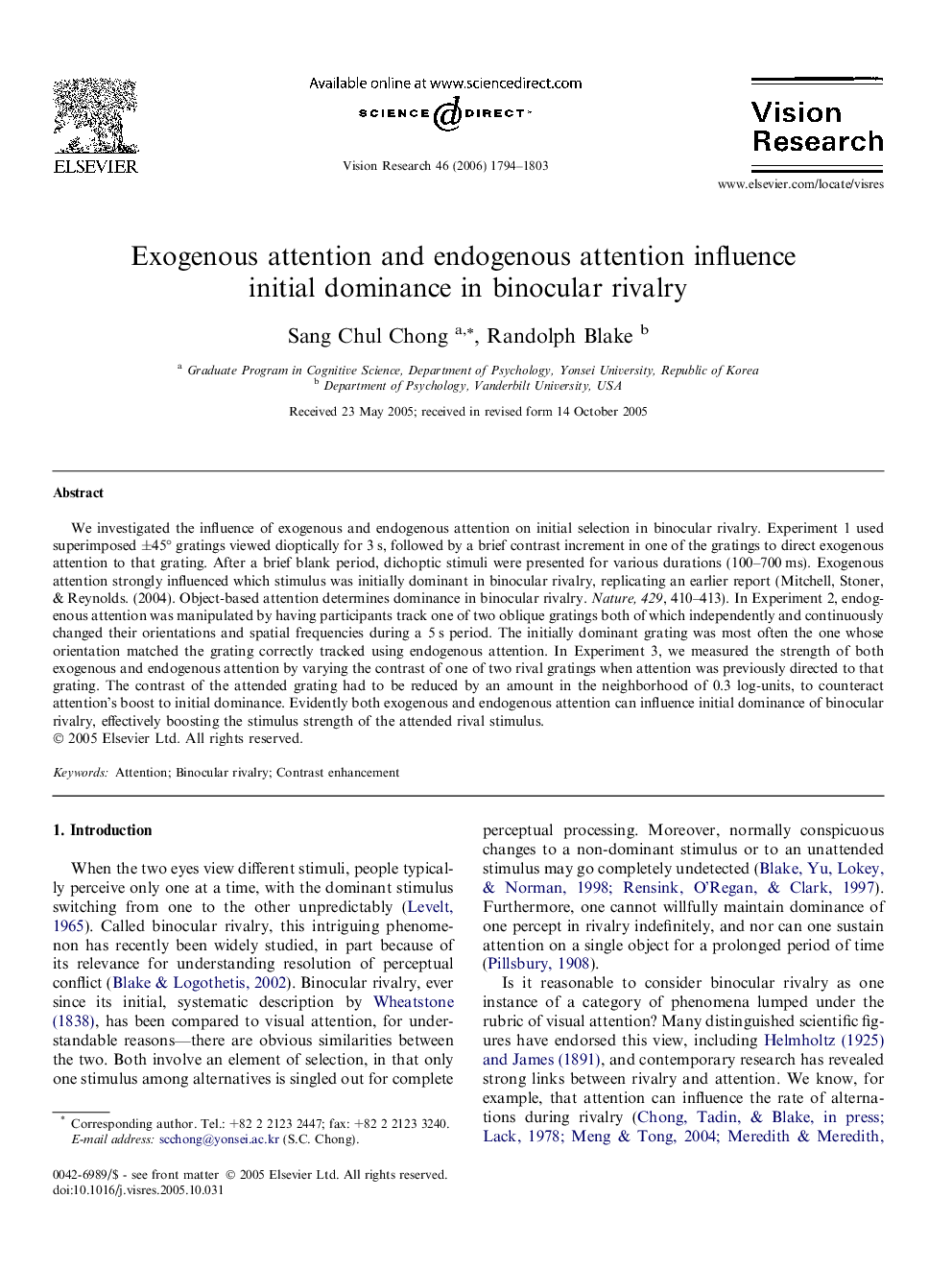| Article ID | Journal | Published Year | Pages | File Type |
|---|---|---|---|---|
| 4036727 | Vision Research | 2006 | 10 Pages |
We investigated the influence of exogenous and endogenous attention on initial selection in binocular rivalry. Experiment 1 used superimposed ±45° gratings viewed dioptically for 3 s, followed by a brief contrast increment in one of the gratings to direct exogenous attention to that grating. After a brief blank period, dichoptic stimuli were presented for various durations (100–700 ms). Exogenous attention strongly influenced which stimulus was initially dominant in binocular rivalry, replicating an earlier report (Mitchell, Stoner, & Reynolds. (2004). Object-based attention determines dominance in binocular rivalry. Nature, 429, 410–413). In Experiment 2, endogenous attention was manipulated by having participants track one of two oblique gratings both of which independently and continuously changed their orientations and spatial frequencies during a 5 s period. The initially dominant grating was most often the one whose orientation matched the grating correctly tracked using endogenous attention. In Experiment 3, we measured the strength of both exogenous and endogenous attention by varying the contrast of one of two rival gratings when attention was previously directed to that grating. The contrast of the attended grating had to be reduced by an amount in the neighborhood of 0.3 log-units, to counteract attention’s boost to initial dominance. Evidently both exogenous and endogenous attention can influence initial dominance of binocular rivalry, effectively boosting the stimulus strength of the attended rival stimulus.
